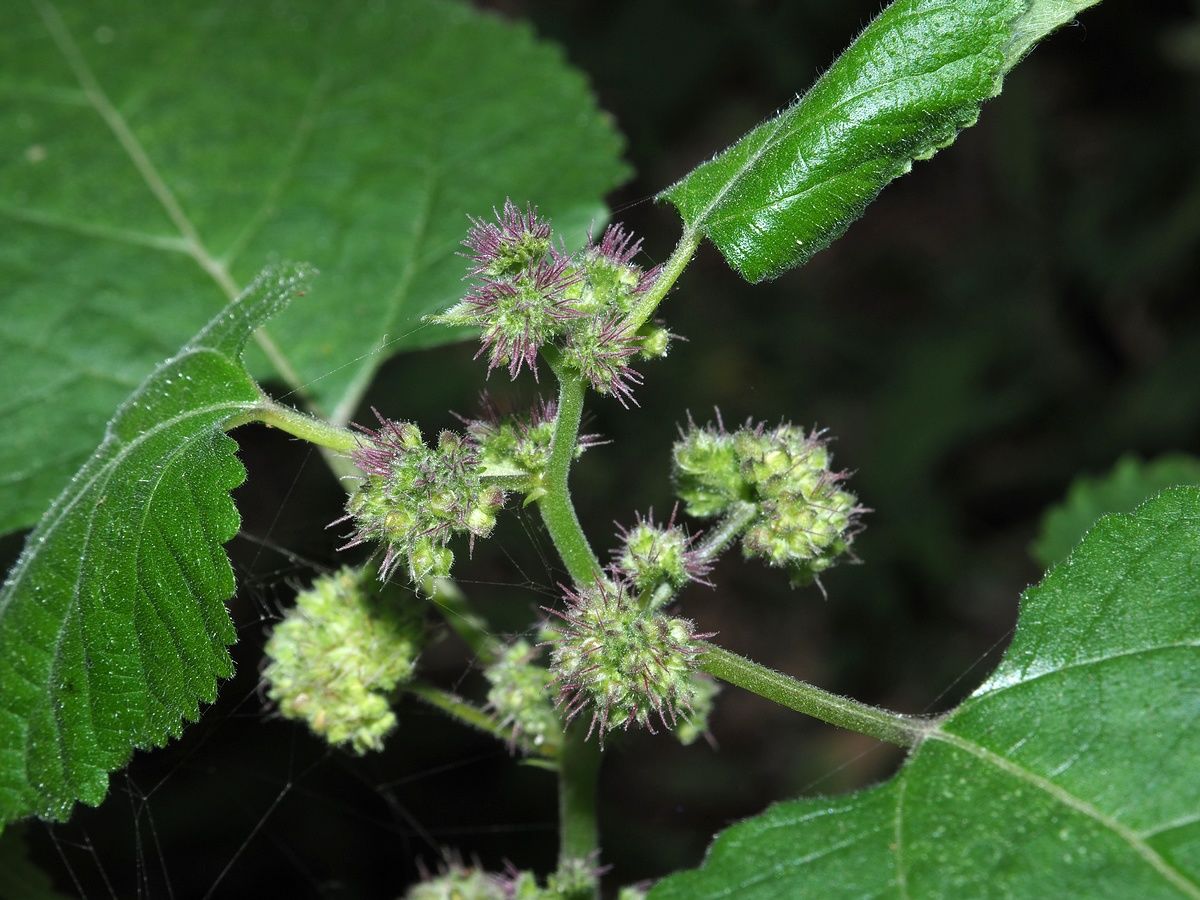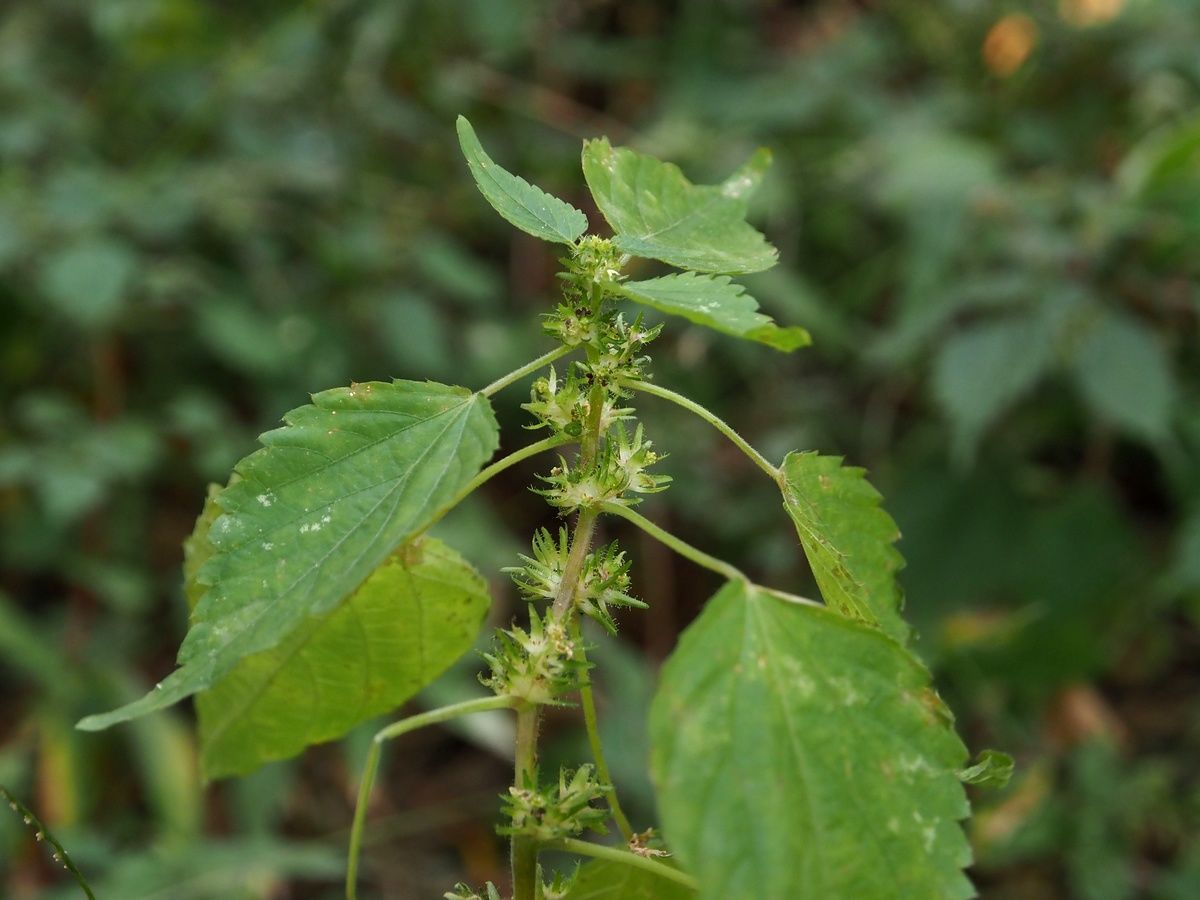Matsucyparis pisifera
fatoua villosa
Also known as: ["Matsucyparis pisifera","False Cypress"]
Overview
A deciduous or semi-evergreen shrub with fine, feathery foliage, often used for hedges or ornamental purposes.
Benefits & Perks
["aesthetic foliage","seasonal color change"]
Botanical Classification
| Phylum: | Magnoliophyta |
| Class: | Magnoliopsida |
| Order: | Rosales |
| Family: | Moraceae |
| Genus: | Fatoua |
| Botanical Name: | Fatoua villosa |
Plant Characteristics
Basic Information
- Category: Shrubs
- Suitable Location: shady garden beds or woodland settings
- Suitable For:
- Is Weed: No
- Allergenicity: low
Environmental Needs
- Climate: {"temperatureRange":"10–30°C"}
- Hardiness: {"zones":"5–9"}
- Misting: rarely required, only if ambient humidity is very low
- Drainage: Fast-draining to prevent waterlogging.
- Soil Type: Well-draining, fertile soil with organic matter; cactus mix with added compost works well.
Maintenance Level
- Maintenance Level: moderate
- Toughness Level: moderate
- Pruning Frequency: As needed, typically every 2–3 months or after flowering.
- Pruning Intensity: Light to moderate; avoid heavy pruning unless necessary to control size.
Care Details
Ideal Sunlight Coverage:
Bright indirect light for 6–8 hours daily; tolerates partial shade but may become leggy in low light.
Sunlight Tolerance Tips:
Acclimate gradually to direct sunlight to avoid scorching; place in bright indirect light indoors; move outdoors slowly in spring/summer.
Care Requirements
Care Difficulty
easyeasy
Sunlight
partial shade to full shade
Avoid direct afternoon sun; rotate plant for even growth; adjust light exposure seasonally.
Watering
every 7–10 days, allowing soil to dry between waterings
Water thoroughly until it drains from the bottom; allow soil to dry between waterings; avoid overwatering.
Soil
moist, rich, well-drained loamy soil
pH: Slightly acidic to neutral (pH 6.0–7.0).
Use well-draining mix; avoid heavy clay soils; amend with organic matter for fertility.
Temperature
Prefers 65–75°F (18–24°C); tolerates 50–85°F (10–29°C); prefers stable temperatures without extreme fluctuations.
Avoid sudden temperature changes; protect from drafts; maintain moderate humidity.
Fertilizing
every 4–6 weeks during active growth with balanced liquid fertilizer
Dilute fertilizer to prevent burn; fertilize during active growth; stop in dormant periods.
Propagation
Methods
Stem cuttings in water or soil; division of root clumps is also effective.
Step-by-Step Propagation Guide
- Take a healthy cutting.
- Remove lower leaves.
- Place in medium.
- Keep moist and warm.
- Monitor for roots.
Best Time: Spring or early summer when the plant is actively growing.
Environment
Warm, humid environment with indirect light; maintain consistent moisture.
Medium
Well-draining soil mix or water; peat-based medium with perlite can also be used.
Hormone
Optional but can speed up rooting.
Timeline
Roots typically form in 2–4 weeks; new growth may appear in 4–6 weeks.
Tools Needed
Pruning shears, rooting hormone (optional), small pots, water or soil medium.
Quick Tips
Use healthy, non-flowering stems; keep cuttings out of direct sun; maintain humidity for faster rooting.
Pruning & Repotting
Pruning Guide
Method
Pinch back tips to encourage branching; trim leggy stems to promote compact growth.
Pruning Plan
Prune to maintain shape, encourage bushier growth, and remove dead or damaged foliage.
Tools
Clean pruning shears or scissors, gloves.
Checklist
Sanitize tools; prune dead/damaged foliage; shape as desired; dispose of clippings.
Repotting Guide
Best Season
Spring, before the active growing season begins.
Pot Size
Choose a pot 1–2 inches larger in diameter than the current one.
Method
Remove plant gently; trim roots if necessary; place in new pot with fresh soil; water lightly.
Suggestions
Repot every 1–2 years or when roots outgrow the pot; beneficial for growth and health.
Checklist
Prepare new pot with drainage; gently remove plant; trim roots if needed; add fresh soil; water lightly.
Advanced Care Tips
Watering Mastery
Watering Checklist
Check soil moisture; water thoroughly; ensure drainage; adjust for season.
How to Apply Water Properly
Water directly at the root zone, ensuring even moisture distribution; water deeply to encourage root growth; ensure excess water drains away to prevent waterlogging.
Watering Schedule Tips
Water when the top inch of soil feels dry; reduce frequency in winter to prevent root rot.
Soil Improvement
Add perlite or sand for drainage; incorporate compost for fertility; ensure good aeration.
Temperature Stress Management
Signs of Temperature Issues
Yellowing leaves, wilting, or stunted growth in cold; leaf scorch or wilting in excessive heat.
Cold Stress
Slows growth, may cause leaf drop, and increases susceptibility to root rot due to reduced metabolic activity.
Solution: Move to a warmer location; insulate pots; avoid cold drafts; reduce watering in cold conditions.
Hot Stress
Leaves may scorch, wilt, or drop; growth may slow due to excessive transpiration.
Solution: Provide shade during peak heat; increase humidity; water more frequently but avoid waterlogging.
Fertilizing Guide
Fertilizing Checklist
Check growth season; dilute fertilizer; apply to moist soil; rinse if runoff appears.
Fertilizing Method
Use balanced liquid fertilizer diluted to half strength every 4–6 weeks during growing season (spring/summer); avoid fertilizing in fall/winter.
Common Problems & Solutions
Toxicity Warning
Cats
Non-toxicFatoua villosa is not considered toxic to cats. There are no known toxic effects or physiological impacts associated with this plant when ingested by cats.
⚡ Toxic If:
if eaten
Dogs
Non-toxicFatoua villosa is not considered toxic to dogs. There are no known toxic effects or physiological impacts associated with this plant when ingested by dogs.
⚡ Toxic If:
if eaten
Humans
Non-toxicFatoua villosa, commonly known as hairy mat-rush, is not considered toxic to humans. There are no known toxic effects or physiological impacts associated with this plant.
⚡ Toxic If:
if eaten
Frequently Asked Questions
Q: Is Fatoua villosa toxic to pets?
A: There is insufficient data on its toxicity to pets.
Q: How often should I water Fatoua villosa?
A: Water moderately, allowing the soil to dry slightly between waterings.
Q: Does Fatoua villosa attract wildlife?
A: It is not known for attracting significant wildlife.
Quick Reference
| Family: | Moraceae |
| Care: | easy |
| Light: | partial shade to full shade |
| Water: | every 7–10 days, allowing so |
Get Expert Care Tips
Download the Plantious app for personalized care reminders and plant identification!
Google Play App Store








